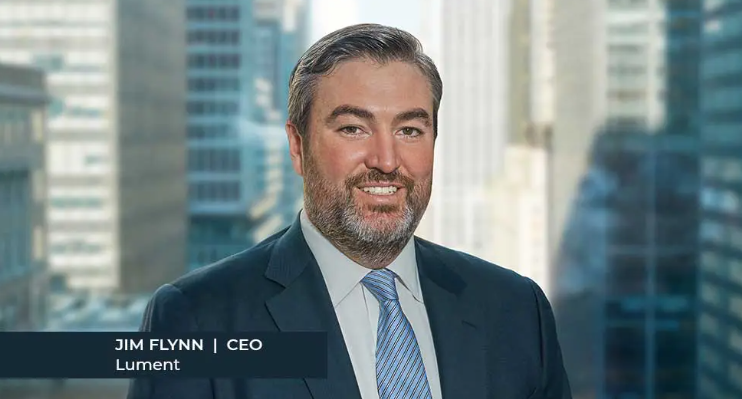
During the early 2010s, multifamily investors and commentators sometimes questioned their good fortune, wondering how long the expansion fueled by steady GDP growth and low interest rates was going to last—but by the middle of the decade, the multifamily community had become comfortable with the status quo. The supply chain and labor shortages and the inflationary pressures kicked off by COVID swept that sense of certainty away.
This year, the Federal Reserve has raised interest rates a total of 375 bps. Just a few days after its last hike in November, Lument CEO Jim Flynn sat down to explain his views on where the multifamily market is going. His conclusion: the multifamily market remains attractive—and during the next 12 months it will settle into a new normal, with slightly higher cap rates and interest rates in the 3 to 5 percent range.
“Many people in our industry haven’t been through a cycle before,” he says, “but experience shows that if we think it through, we’ll figure out a way forward.”
Let’s start with the big question that’s on everyone’s mind: What will it take for the multifamily markets to normalize?
The simple answer is that we need stability in the capital markets. So far, we haven’t been able to get to a place where people feel confident that they see an endpoint. This month’s rate hike was relatively seamless. The markets expected a 75 bps increase, the Fed delivered, and the commentary was fairly consistent, but there is still a sense that we are in uncharted territory.
During the pandemic, the government did what it thought we needed to keep the economy moving, but it came at a cost, and we have to pay for it. My view is that we are not going back to the very low interest rates we saw before the pandemic—and if they dropped that far, it would be a sure sign that the economy is in serious trouble. Rather, I see rates stabilizing in the 4 percent range.
In the meantime, the multifamily market remains healthy. Real estate is a traditional inflationary play, and we are in the strongest sector in the asset class. We are seeing rent growth in most areas, although it’s lower than we have seen over the past few years, and it has also been accompanied by higher expenses. As a result, bottom line NOI growth has been muted, but supply-demand economics are there to support the industry for the foreseeable future. Across the country, single-family affordability—the ability of households to afford median-priced homes in their communities—is at all-time lows. Rental housing will be crucial in filling this gap.
As the capital markets stabilize, we will start seeing the price discovery between buyers and sellers that’s typical for this stage in the cycle and transaction volumes starting to pick up. I don’t think we are there yet, but I am optimistic that it’s coming as we head into 2023.
For the moment, though, valuations have stayed relatively high and are lagging the rise in interest rates. Do you see these trends aligning?
I do think cap rates have to go up across the board. Apartment cap rates relative to 10-year Treasury are at levels we haven’t seen since the 1980s. At the same time, I don’t think they need to mirror the 10-year’s trajectory. I expect to see cap rate expansion of 25 to 50 bps across the board or perhaps more depending on the market. I don’t think current levels are sustainable or healthy for the market in the long-term.
One of the lessons of the past few years is that markets are subject to external forces, including pandemics, warfare, and climate change. Is there anything that investors can do to increase their resiliency?
It is very hard for any of us to do much about geopolitical risk or another pandemic. I don’t know if there is a playbook for a real estate owner if the war in Ukraine spreads into a larger conflict or another pandemic breaks out. The positive for us is that regardless of what happens, people need to live somewhere. Although some people may move home to their parents’ or look for roommates during a crisis, home ownership is expensive and multifamily remains an appealing option.
When it comes to reducing their energy costs and carbon footprint, however, owners have a range of options. The combination of agency and FHA incentives for green development and state and local initiatives has changed expectations, and there has been a tremendous amount of investment and research into making assets greener. The kind of routine energy and water efficiencies being built into properties today would have been seen as state-of-the-art ten years ago.
One of the biggest challenges our industry and our country face right now is housing affordability. What needs to be done?
There is no easy answer. There is a broad consensus, in our industry as well as in government, that much more needs to be done if we are to get a handle on affordability. This is certainly something that the real estate industry can’t do alone. Although we have recently seen price increases in materials and labor have started to slow, overall costs are still going up. It is very difficult now to build something that is affordable. Acknowledging this, the federal government—through the GSEs and FHA—as well as state and local governments are expending time, effort, and resources to expand existing programs or incentivize new loan or equity products to address these issues. Affordability is a huge problem. We’ve made a start, but we obviously need to work together to do more.
What is your sense of the prospects and challenges for seniors housing?
Seniors is an asset class that we like—and as more and more people enter that 55-plus group, we like it more and more. The 55-plus crowd has increased 30 percent over the last decade and will increase another 15 percent over the next decade. The reason this is important is that many of the seniors housing facilities built over the past decade have been designed to provide a continuum of care. People are moving to them when they are relatively young and healthy, choosing communities in which they can age in place.
In the short term, however, seniors housing is facing a number of challenges. The industry was extraordinarily hard hit by the pandemic, no doubt about that, and the shortage of qualified staff—and the increasing salaries they command—have slowed its recovery. But once we get through the coming year, we see occupancy picking up across the board.
What is your view of prospects for New York and similar markets?
New York has done very well in terms of recovery from its pandemic low point, although West Coast cities like San Francisco and Seattle have not performed as well. In New York, we have seen young people move back to the city, and many companies have progressively shifted their hybrid models to require employees to spend as many as four days in the office. This is a significant change from what we expected a year ago.
As I said, affordability remains a serious problem, but the tremendous amount of higher-end real estate entering the market has loosened things up a bit. Rents in New York are up relative to other cities, but nowhere near as much as in the Sunbelt, Las Vegas, and Phoenix where we have seen extraordinary rent growth. These markets are a bit less affordable than they once were.
Over the long term, the growth of New York and other gateway cities depends on our ability as a country to come to some resolution about how we are going to address immigration. Historically, a city like New York has been one where people move out to raise a family and are replaced by younger and often immigrant workers. They take lower paying jobs in the service industry and begin their ascent. This process has been vital for our country for the last 200 years, and we need to put it on a stronger footing.
Given the current environment, what can borrowers do to make themselves more appealing to lenders?
For borrowers, navigating the environment means managing their portfolios proactively, making a realistic assessment of where rates are and how best to deploy their capital. Customers who have some liquidity have been talking to us about taking some of the risk off the table while others who have solid portfolios but less liquidity have been looking to see what solutions might be out there. There is still financing available as well as a host of local programs that can help owners stabilize their assets in the meantime.
Are there other creative opportunities out there?
It depends on your situation. For instance, borrowers who may be looking to dispose part of their portfolio may be able to monetize their ability to offer purchasers assumable, low-interest debt. Others might determine how much interest-rate volatility they have on their books and consider hedging to lock in costs. If you can lock in something that works today, you should consider it.
Or take the case of a highly successful client of ours with a very large portfolio. With the run-up in values, he decided that this was not the time to use his capital to make purchases. Instead, he chose to reduce his long-term energy costs by implementing solar across his entire portfolio. This decision allowed him to better manage the expense side of his portfolio while doing something to minimize climate change. In the process, he turned a challenge into an opportunity that increased the value of his portfolio. The period we are going through right now is the ideal moment for creative thinking.
